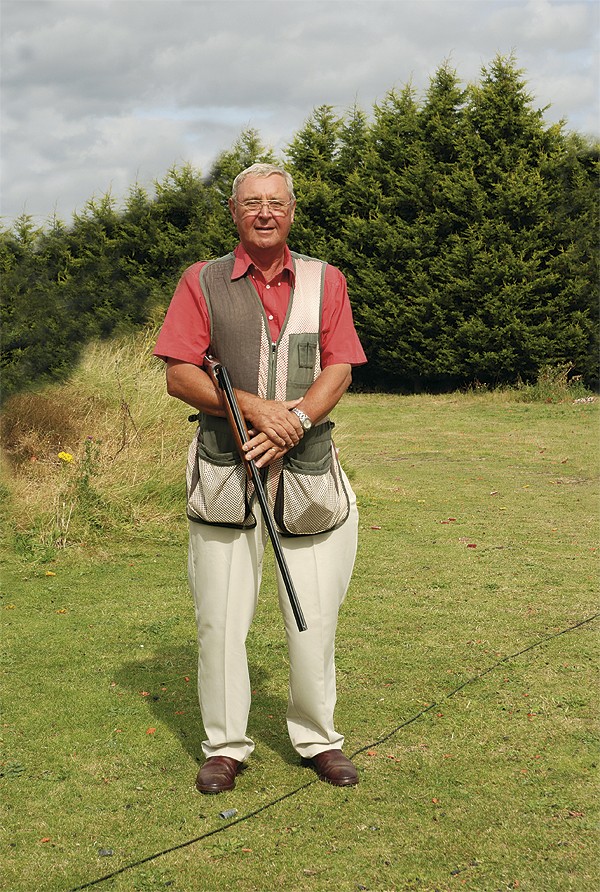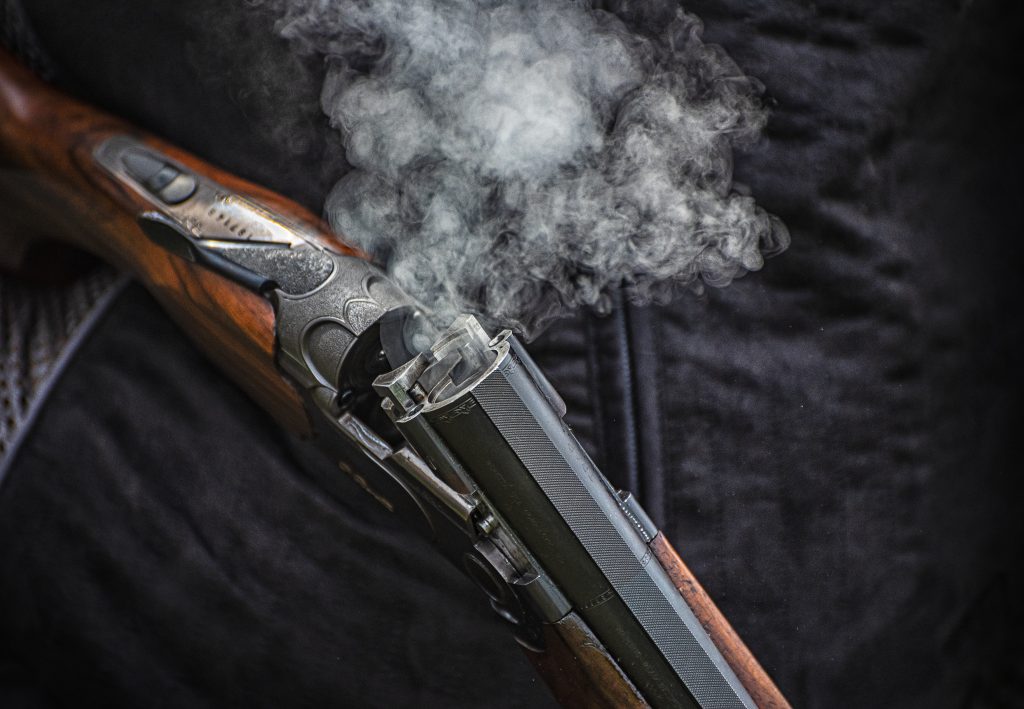Win CENS ProFlex DX5 earplugs worth £1,149 – enter here
Sam Grice – Sporting Lives
Charlotte Lycett Green meets expert shooting instructor Sam Grice

Sam Grices shooting creed is simple: good shooting comes from a combination of the right technique and plenty of practice. Thats easier said than done for most shooters, but when I met Sam at his Long Acres Shooting Ground, he assured me that, People only miss birds because they are not doing it right.
Like most little boys in the 1940s, Sam Grice began his sporting life with a catapult in his hands, but the memory of his first shooting experience stands out in his mind. One of my earliest memories is of watching my father shooting a pigeon. I thought it was the most exciting thing ever. Dad shot it and gave me the cartridge I smelled it and was hooked, he said. Id always been good at sport but the first time I was invited to shoot I only hit one bird all day. So I took lessons with Ernie Johnson at Gallyons of Cambridge and decided that I didnt only want to be good, I wanted to be brilliant.
During Sams time as a schoolmaster at The Leys, in Cambridge, he set up a clayshooting club and from it founded the Eastern Area and National Public Schools Clayshooting competition. The Leys won in 1979, and at its Sam Grices shooting creed is simple: good shooting comes from a combination of the right technique and plenty of practice high point there were 36 schools competing. When he started Long Acres in 1986, Sams focus shifted and he now specialises in coaching gameshooters novices to experienced Shots.
With his words about only missing because youre not doing it right in my head, we walked out on to the clayground for some instruction. Sam lent me a 12-bore, using a light load and a recoil pad for my shoulder. He put up the first clay and watched me miss it, hit the second and miss the third. He worked out my problems in an instant and, telling me not to poke at the target, the instructions that followed combined to form a three-stage process: to pick up the target with both eyes, shut my left eye and pull the trigger in a rhythm of one-two-three. I repeated this process again and again as Sam sent up clays for me and, to my complete surprise, shattered them every time. It was incredible how simple he had made it for me and I hadnt once heard him utter the phrase give it more lead. It was amazingly satisfying.
Sadly, many shooting enthusiasts have no real understanding of effective technique, said Sam. Often all they have to go on is a mishmash of ideas and a few phrases of well-meant advice, invariably out of context and totally unrelated.
Practice makes perfect, but only if youre practising the right thing, so its important to acquire some sound basic skills from which to build on, he continued, and of course its absolutely vital that the gun fits you properly and that you have a good, stable mount.
I will need many more lessons with Sam before Id ever consider myself a decent Shot, but the point is the same. He has a natural ability to tailor his instruction to the person he is teaching to get an instant result, which is a true skill. When youre coaching, you have to be versatile. There are hundreds of different ways of saying the same thing, but youve got to be articulate and able to present those ideas so that the person youre coaching understands. Some people are harder to coach, perhaps because they are older or their reflexes are slower, or they are simply unco-ordinated. But, as I said before, the only reason why people miss birds is because they are not doing it right.
Its important, though, when youre learning something or trying to improve that you have some success on the way. If you have success then you have something to build up from.
Sam has written a book, Ahead of the Game, which provides expert coaching for the sporting Shot. Its extremely useful for both novices and experienced Shots since it covers everything from gun fitting and etiquette on a shoot day to mastering crossing shots and high pheasants, as well as how to compensate for limited movement when shooting from a hide: From a sitting position there is always a tendency to shoot high. The trick is to sit well forward to give you as much mobility as possible. Slouching or leaning back will only increase the risk of shooting over the top of the bird, he writes, also mentioning the safety aspect of shooting from a hide, In my view, the best and safest option is for there to be only one shooter per hide. Another decoyer may be good company but that is far outweighed by the increased risk
An important factor to consider is the choice of seat. A plastic drum provides the advantage that its easy to get up from a flat-topped seat such as this or even swivel round while seated; being able to turn is what its about. As always, anticipating a likely shot and getting into the right position will stack the odds in your favour.
As well as being a Fellow of the Insitute of Clay Shooting Instructors and a CPSA senior Sporting and skeet coach, Sam also shoots game very effectively. Its perhaps unsurprising, given that he lives in East Anglia, that the partridge is his favourite quarry. Above all I love partridge shooting its very reactive, he said. You cant measure the birds off like you can on a high pheasant. But I rely entirely on technique its all about timing.
John Humphreys wrote in Shooting Times recently about a day when his own shooting was not finding the mark (Cool under pressure, 5 March). After missing the first seven birds at a famous Staffordshire shoot, I imagined my old friend Sam Grice of Long Acres Shooting Ground materialising behind me with his wise words and positive approach, and killed the next eight without missing.
Sams one of the best coaches I know, said John. Hes enormously good as a confidence booster, seeing where youre going wrong and putting you right straight away. Hes a great communicator, too.
When it nears the time, a lesson with Sam in advance of the shooting season would be an excellent and worthy appointment to have booked in your diary.
For more Information
To order a copy of Sam Grices book, contact Peter Spiegl & Co, tel 01780 762550. Price: £17.50.
To book a lesson with Sam Grice at Long Acres Shooting Ground, tel 01223 359856 or 07850 876826.
Related Articles
Get the latest news delivered direct to your door
Subscribe to Shooting Times & Country
Discover the ultimate companion for field sports enthusiasts with Shooting Times & Country Magazine, the UK’s leading weekly publication that has been at the forefront of shooting culture since 1882. Subscribers gain access to expert tips, comprehensive gear reviews, seasonal advice and a vibrant community of like-minded shooters.
Save on shop price when you subscribe with weekly issues featuring in-depth articles on gundog training, exclusive member offers and access to the digital back issue library. A Shooting Times & Country subscription is more than a magazine, don’t just read about the countryside; immerse yourself in its most authoritative and engaging publication.







